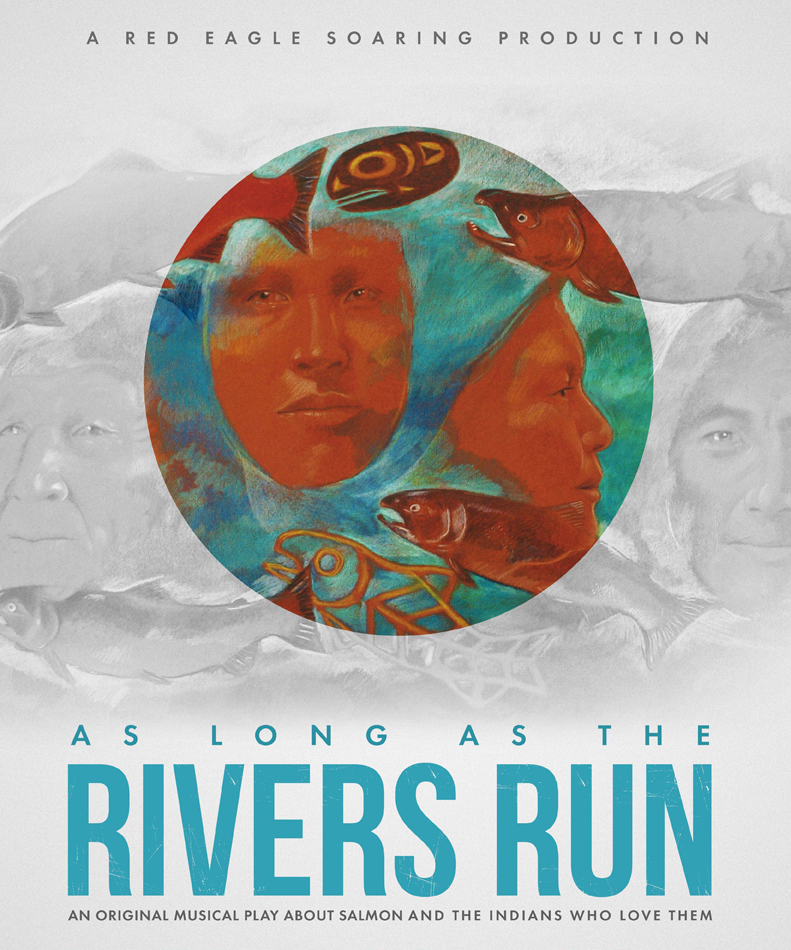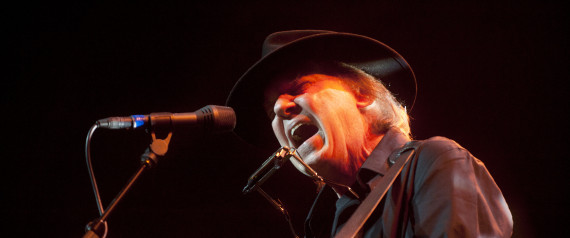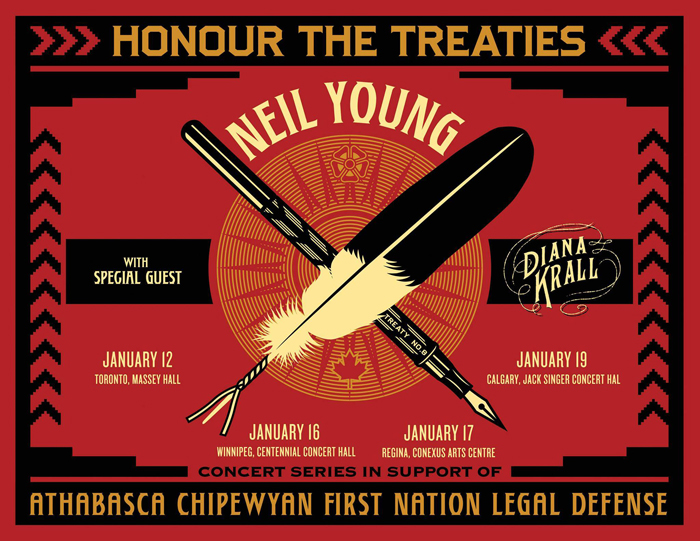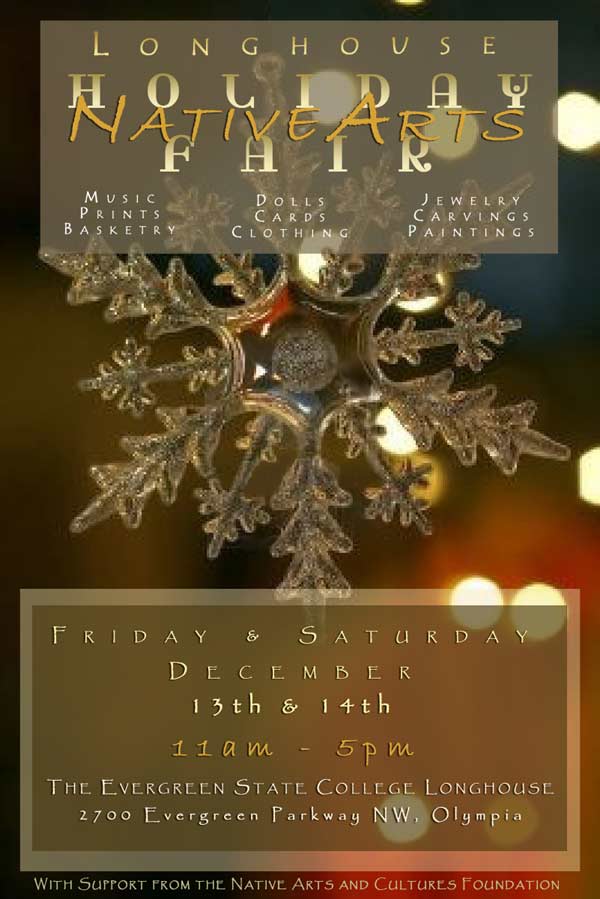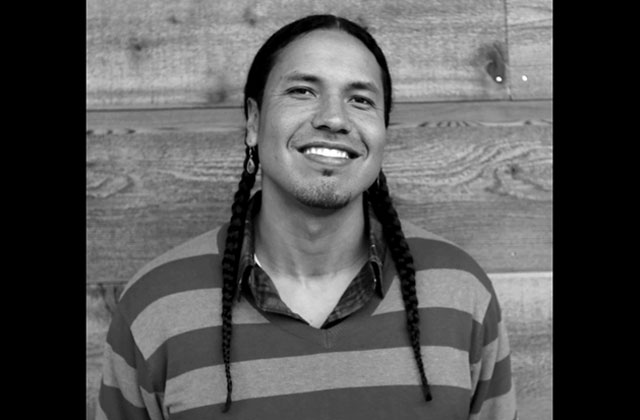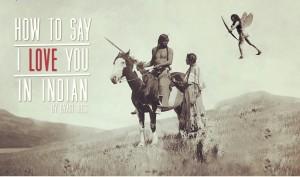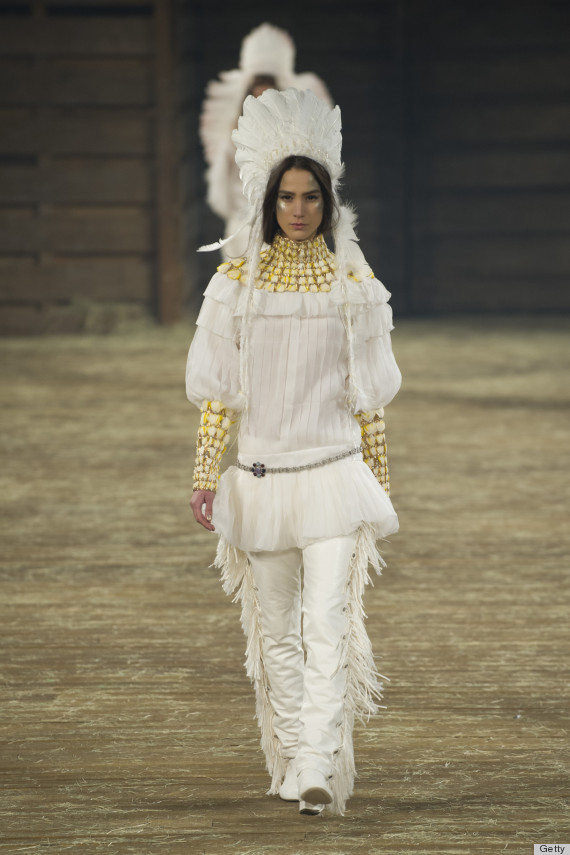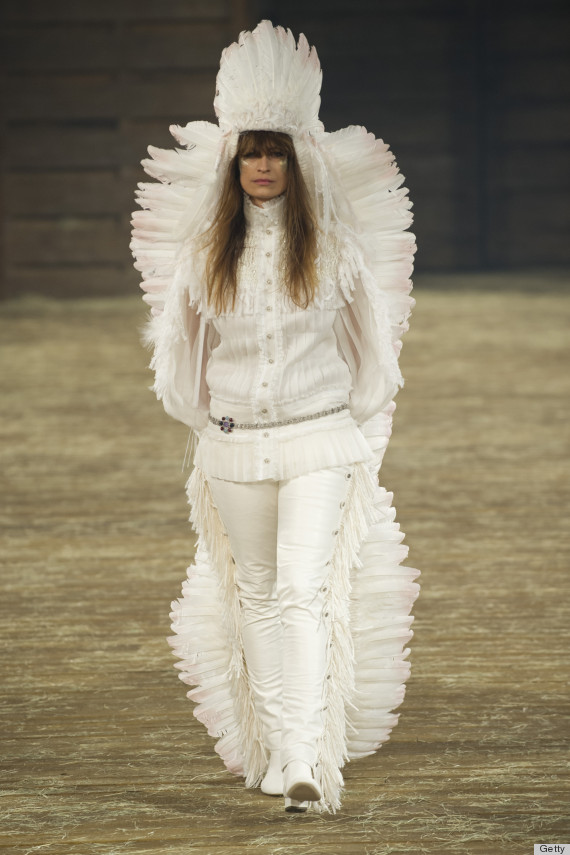Please join Red Eagle Soaring Native Youth Theatre on Sunday, December 15th for a performance of As Long As The Rivers Run, an original musical play by Roger Fernandes (Lower Elwha Klallam) about the historical and contemporary relationship between salmon and Northwest Native peoples. Reception and refreshments following, all are welcome.
Category: Arts & Entertainment
Annual Tulalip Bay Fire Department Santa Run, Dec 14-15
Neil Young Helping First Nations Fight Oilsands With “Honor The Treaties” Tour
Source: HuffPost Canada Music | By Jason MacNeil
Neil Young has announced four intimate benefit shows as part of a week-long Canadian mini-tour dubbed “Honor The Treaties” to assist the Athabasca Chipewyan First Nation (ACFN) Legal Defence Fund.
The four-city tour will include special guest Diana Krall as well and commences at Toronto’s Massey Hall on Jan. 12. Additional dates include Winnipeg’s Centennial Concert Hall (Jan. 16), Regina’s Conexus Arts Centre (Jan. 17) and concluding at Calgary’s Jack Singer Concert Hall on Jan. 19. Tickets for all four benefit gigs go on sale tomorrow (Dec. 10). Ticket prices have yet to be announced. The Canadian dates follow four scheduled concert Young has at New York City’s Carnegie Hall starting Jan. 6.
The ACFN “challenges against oil companies and government that are obstructing their traditional lands and rights.” The announcement adds the legal challenges will ensure “the protection of their traditional lands, eco-systems and unique rights guaranteed by Treaty 8, the last and largest of the nineteenth century land agreements made between First Nations and the Government of Canada, are upheld for the benefit of future generations.”
According to the ACFN’s page, the treaty was the last but largest agreement between the two parties, encompassing more than 840,000 square kilometers. “From that point in time up to the present, the federal government has claimed that the Cree, Dene, Metis and other various First Nations peoples living within the Treaty 8 boundaries had surrendered any claim to title to all but the lands set aside as reserves.”
The tour comes following Young’s description earlier this year of Fort McMurray and neighboring oilsands projects in Alberta, comparing Fort McMurray to “Hiroshima.” “People are sick,” he said during a speech in Washington, D.C. “People are dying of cancer because of this. All the First Nations people up there are threatened by this.”
Earlier in 2013, a series of Idle No More benefit concerts took place in various Canadian cities raising awareness about the issues facing First Nations. Guitarist Derk Miller organized such a gig in Ottawa in January, 2013 while other concerts took place from coast to coast.
Also in early January, 2013 dozens of Canadian musicians penned a letter supporting the Idle No More movement. According to a Facebook post, the letter demanded “Canadians honour and fulfill indigenous sovereignty, repair violations against land and water, and live the intent and spirit of our Treaty relationship.”
The letter was signed by artists such as John K. Samson, Gord Downie, Feist, Sarah Harmer, Steven Page, The Sadies, Justin Rutledge, Blue Rodeo’s Greg Keelor Jim Cuddy and Broken Social Scene’s Kevin Drew and Brendan Canning among others.
Although initial reports indicated tickets go on sale Tuesday (Dec. 10), a Ticketmaster link to the Winnipeg concert says tickets for that particular show go on sale Friday (Dec. 13). The link for the Winnipeg show also indicates the price range is from $59.50 on the low end up to $260.25 on the high end. Meanwhile, the Massey Hall link for the Toronto concert says tickets (ranging from $95 to $250) go on sale Friday morning at 10:30am local time.
Evergreen State College Longhouse Bazaar, Dec 13-14
December 13-14, 2013 11am-5pm. Every year many of the areas talented native artists gather together in harmony at the Longhouse native art fair. It’s a great event with lots of goodies to choose from.
Native Author Gyasi Ross Talks Cultural Preservation
Gyasi Ross is a member of the Blackfeet Nation and his family also comes from the Suquamish Nation of the Port Madison Indian Reservation where he resides. Aside from being a father, lawyer and a filmmaker, the ever-busy Ross has found time to write two books. His latest, “How to Say I Love You in Indian” (Cut Bank Creek Press) comes out today. Here, he talks about real love, feminism via bell hooks and fatherhood.
The title of your book, “How to Say I Love You in Indian,” might confuse people. What do you mean by it?
Well, there are a lot of fluent speakers of the Blackfoot language in my family, and my grandparents or really most people in my family will say they’re speaking in Indian. That’s just the way old folks speak, and that’s who I was raised by, by grandparents and great aunties and uncles.
What about the love part of the title?
Poor people have different ways of communication, different kinds of love that are not part of materialistic culture. Expressing love isn’t about a Hallmark card. … It’s not about convenience. It’s not always about being vocal and poetic about love, it’s about taking care of each other—like cooking. One of the stories in the book is about stew and how it’s representative of love for a lot of poor people, and Indian people specifically. We always had the worst cuts of meat and the worst ingredients, but through those ingredients, time, love and secret sauce, it turned into a beautiful stew. That’s what the title of the book is all about: physical manifestations of love and the symbols of our love within Native culture.
So it sounds like it’s less about saying “I love you,” and more about how you express it.
Right, it’s about the action. A lot of the work that I do and the writing that I do is about fatherhood and mentorship. And because I’m a dad, I remind myself that I can say “I love you” all I want, but if my actions aren’t commiserate with that, then it doesn’t matter.
I noticed that you thanked bell hooks and you also have quote from her in the book. She’s written a lot about love, and I’m curious about how she’s influenced your work.
I think that bell hooks made feminism approachable to me. I was raised by a single mom and two older sisters, and by my grandmas, who are both amazing women. Just today, I was speaking with my auntie Wilma Faye and she’s also provided a lot of structure for me. I tend to put women on a pedestal, and Native women especially because they were the ones who ensured that I was safe and always doted on me—to a fault, maybe. It was bell hooks who helped me to look more critically at the relationships that women have with men, and with young boys and sons specifically. And that was important for my intellectual development and my emotional honesty.
You’re a father, a lawyer and a lot more. When did you find the time to write this book?
I don’t sleep much, and that’s tongue-in-cheek, but it’s also true. I come from a home with a single mother, and so I take fatherhood and being an uncle very seriously. I try to work on that first and foremost, before any other those other titles—lawyer, writer, anything else—I’m a dad. And I’m also an uncle; I’ve been one since I was 12 years old. For me, what that means is that I have to figure out a way to negotiate everything else around those two things. I work entirely for myself, and when my son’s at school, that’s game time and I can work. But when he’s home from 3 o’clock to 9 o’clock, that’s his time. He can’t just see me on my computer working. He needs to see me hanging out with him and being active as a way to teach him a healthy lifestyle. No paid work is getting done at that time. Whether it’s writing, lawyering or consulting, that happens from 9 o’clock in the evening until it gets done.
You write in the book that the last 500 years don’t define us as indigenous peoples—that the future will. What does that future look like for you?
There’s a lot of controversy about how long Natives in both North and South America have been here, somewhere between 20,000 and 50,000 years. Five hundred years is absolutely nothing compared to how long we’ve been here. The United States empire is already showing incredible signs of decay, it’s already falling apart. And most Natives can understand that this has been an experiment gone terribly wrong and that we shouldn’t buy into it. Some Native people are trying to dis-enroll other tribal members over casino money—and that’s the culpability that bell hooks writes about—and some of us are buying into this failed experiment. That’s a subset of Native people don’t understand that this is just a drop in the bucket.
What about the long-term future?
One of my mentors, Darrell Kipp passed [very recently]. He’s a member of the Blackfoot Tribe who started immersion school on our reservation. He was someone who dedicated his life to the survival of a way of life: speaking our languages, keeping our customs alive, and understanding that those ways of being are going to have relevance and pertinence again. It’s worth sustaining, it’s worth helping those things to survive. Right now, there are enough Natives who get it, that this is a very temporary, illusory American way of life, and we can’t get caught up in the glamour and glitz of it.
And what about the short-term future?
In the short term, it’s about letting go of the exclusivity—we’ve always been about inclusiveness. Tribal enrollment is a legalistic mechanism that isn’t even based in traditional notion because we had communities that you were either a part of or you weren’t. If you came to our communities in good faith, you were put to work. The more we buy into that exclusivity model that somehow being an Indian, being a Native, or being a tribal member has more value than simply being responsible, that worse off we are. But if we recognize that being a Native person is all about responsibility and continuing a way of life, then I think our outlook is good.
Arts & Tech HS presents ‘And Then I Wrote …’ Dec. 13-14
Source: Marysville Globe
TULALIP — The Marysville Arts & Technology High School is presenting the play “And Then I Wrote …” from 7-9 p.m. on Friday, Dec. 13, and Saturday, Dec. 14, on campus at 7204 27th Ave. NE.
In this showbiz comedy, a producer and his secretary and other associates try to rewrite a drama by a neophyte playwright into a broad farce, while a gossip columnist tries to blackmail the producer into marriage, and a scatterbrained old character actor erroneously creates the impression that the leading lady has died.
The playwright, who’s also an apprentice mortician, is appalled by the histrionics that accompany the opening of a Broadway show, and as the columnist draws mistaken conclusions that the show is a cover for a murder cult, the rest of the group fosters this impression by substituting a lady undertaker in the role of the still-alive leading lady.
Mistaken identities, romance and silly situations are designed to keep the audience laughing through three acts.
Admission costs $8 each, or $1 with a canned food donation.
Muckleshoot Winter Pow Wow, Dec 14
Cabela’s® Celebrates Holiday Shopping Season with Free Gifts
Doors Open at 8 a.m., Saturday, December 14
Watch ‘Sake Bombs’—Timbaland-Produced Single by LightningCloud
 Source: ICTMN
Source: ICTMN
When Native hip hop act LightningCloud, which consists of MC Redcloud, Crystle Lightning, and DJ Hydroe, won the East vs. West: Battle for the Best contest back in March, the true prize was the chance to record a track with hip hop mastermind Timbaland. As a producer, Timbaland has been responsible for chart-topping hits by Justin Timberlake, Nelly Furtado, and Aaliyah, and left his mark on instant hip hop classics like “Dirt Off Your Shoulder” by Jay-Z and “Get Ur Freak On” and “Work It” by Missy Elliott.
The fruit of the LightningCloud-Timbaland sessions is “Sake Bombs” (available as a free download at LightningCloud’s SoundCloud page) — here’s the official video:
The clip was filmed at The Gas Lamp restaurant in Long Beach. To stay up-to-date on LightningCloud’s further adventures, visit facebook.com/LightningCloud1491.
Read more at http://indiancountrytodaymedianetwork.com/2013/12/11/watch-sake-bombs-timbaland-produced-single-lightningcloud-152656
Read more at http://indiancountrytodaymedianetwork.com/2013/12/11/watch-sake-bombs-timbaland-produced-single-lightningcloud-152656
Chanel’s Native American Headdress On Runway Raises Eyebrows
The Huffington Post | By Rebecca Adams
Chanel hit Dallas yesterday, staging a Texas-centric fashion show for its pre-fall collection — which included Native American headdresses to accompany the “cowboys and Indians” theme. Cue the controversy.
While Karl Lagerfeld has yet to face a full-on backlash, Twitter has already begun to buzz with commentary about Chanel’s controversial decision to send the headdress down the runway. “Can’t wait for the think pieces on that Chanel Native American headdress,” one user noted.
The preemptive tweet is certainly not off base. Karlie Kloss’ Native American-style headdress in the 2012 Victoria’s Secret Fashion Show caused the lingerie brand to issue an apology and pull the look from the show’s broadcast. H&M was also forced to pull a feathered headdress after offending shoppers earlier this year. Then, of course, there was that ill-advised Native American-themed “Dream Catchin” party Paul Frank put on before controversy broke.
Now, as the skeptical reactions to Chanel’s headdresses on Twitter suggest, the industry is conditioned to anticipate this kind of fashion misstep. But the backlash thus far against Chanel seems to pale in comparison to previous instances — perhaps there are those fashion fans who believe that, in this case, showcasing a Native American-inspired headdress is acceptable. What’s your take on the catwalk homage?

